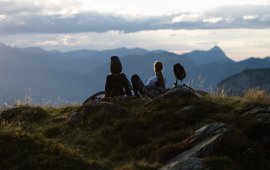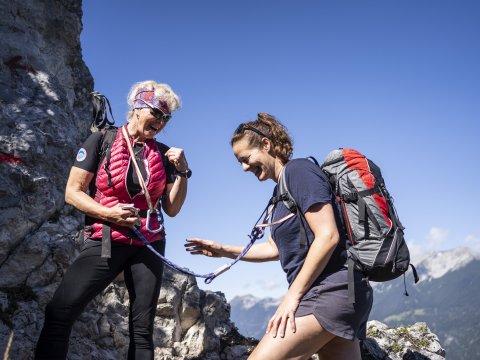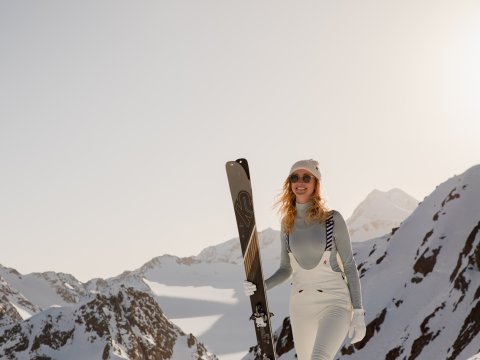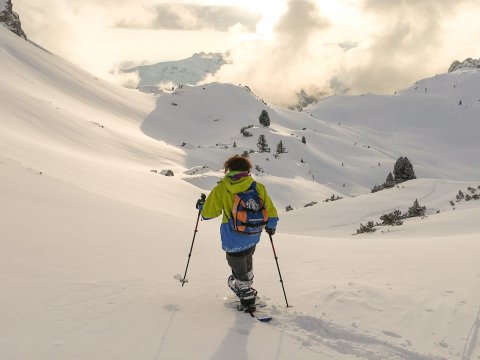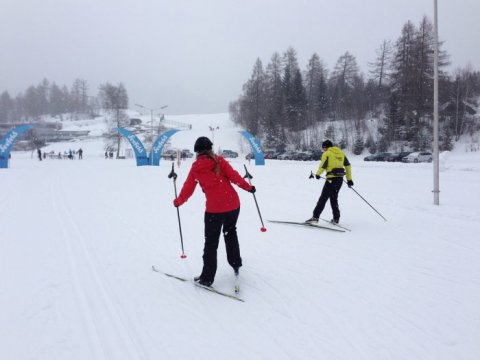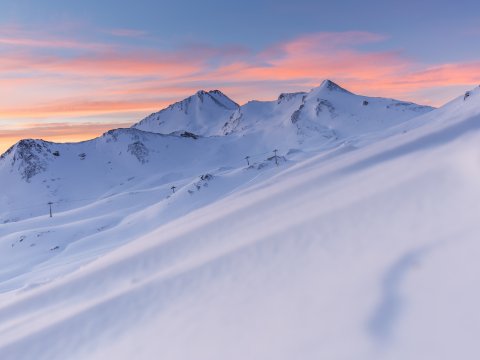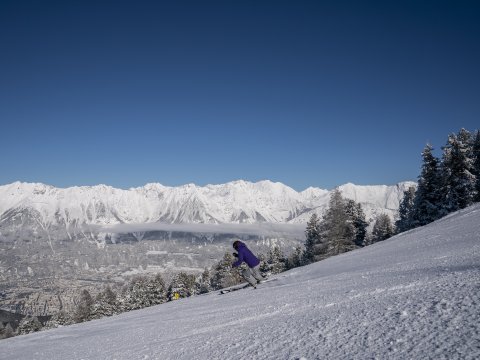Down Chill
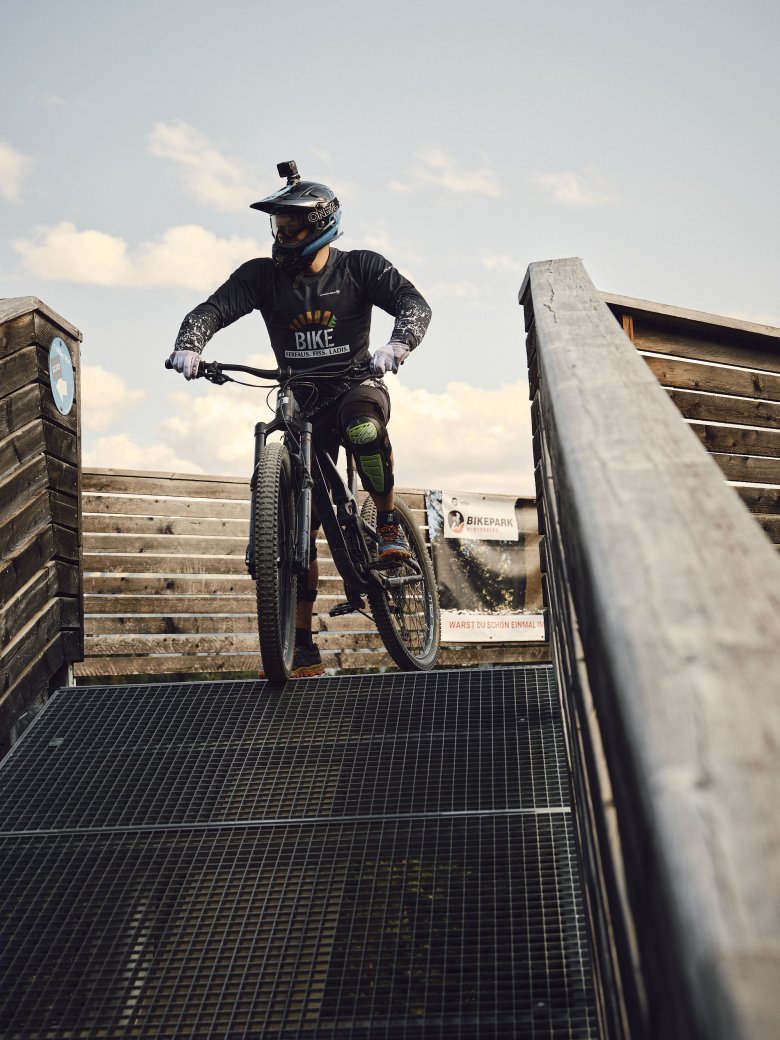
Full-face helmets, protective clothing, super-steep slopes – downhill mountainbiking can seem a pretty intimidating sport. Something for adrenaline-seeking daredevils only? Absolutely not, as our Joe Average author found out when he hit the trails.
It's the evening before I begin my big adventure: downhill mountainbiking. As I gaze out of my hotel window towards the summit of the 2,596-metre-high Oberer Sattelkopf, I wonder what the coming days will bring. Riding down a mountain – and living to tell the tale – seems a pretty absurd idea, to be honest. I pull out my phone and search for videos of the trails I will be riding tomorrow. Turns out I shouldn't have done so. The results are, I suppose you could say, are about as reassuring as what you get when you type "rash" or "dizziness" into Dr Google.
Eight hours – and not that much sleep – later I find myself standing at the bottom of the Waldbahn cable car in Serfaus-Fiss-Ladis. I have to admit I am a little relieved when the friendly member of staff from the bike school comes over and, instead of quizzing me on my bike-handling skills, offers to get me kitted out with a helmet, a back protector and pads for shoulders, knees and shins. To be honest, I wouldn't say no to a full-body airbag, but then that might make riding a bike a little tricky.
My guide and guru for the day, Christian, strolls over. I am worried he is going to take me straight to the top of the mountain for the full in-at-the-deep-end experience, but to my relief we head over to a mercifully flat area of gravel where I am to learn how to handle my brand new toy: a 16-kilo carbon-framed monster of a bike with one sticker on it saying "Rage" and another bearing the wise words: "The only limit to how fast you can go is you". I have to admit that I feel a little silly – like I am learning to parallel park in a Porsche 911.
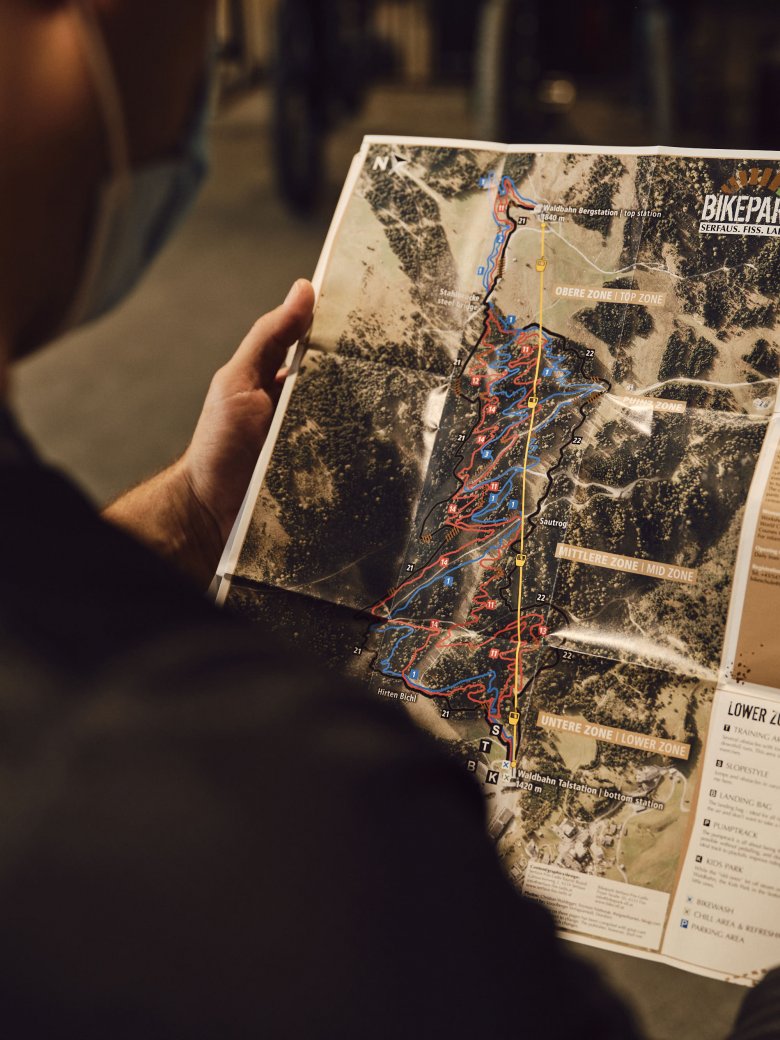
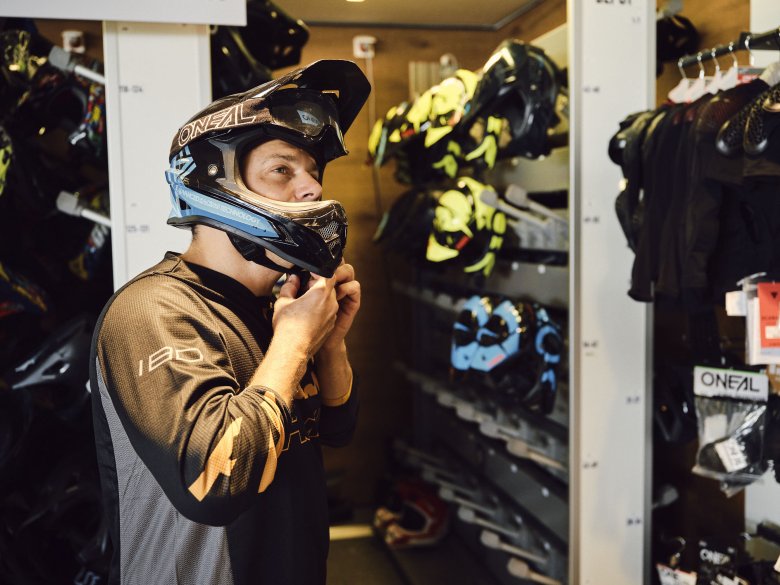

The first exercises are designed to help me get used to the full-suspension bike – weaving between cones on the ground, stopping in front of a line, and learning to use my body weight to "pop" the bike up over a branch. The next step is learning the basic downhill riding position, referred to by Christian as "trail gorilla". It involves standing up on the pedals, keeping my upper body over the handlebars, pushing out my elbows and looking straight ahead. The somewhat alpha-male nickname appears to confirm one of my (many) stereotypes of downhill biking – is it really all about dominance and aggression? I guess I'll find out soon enough.
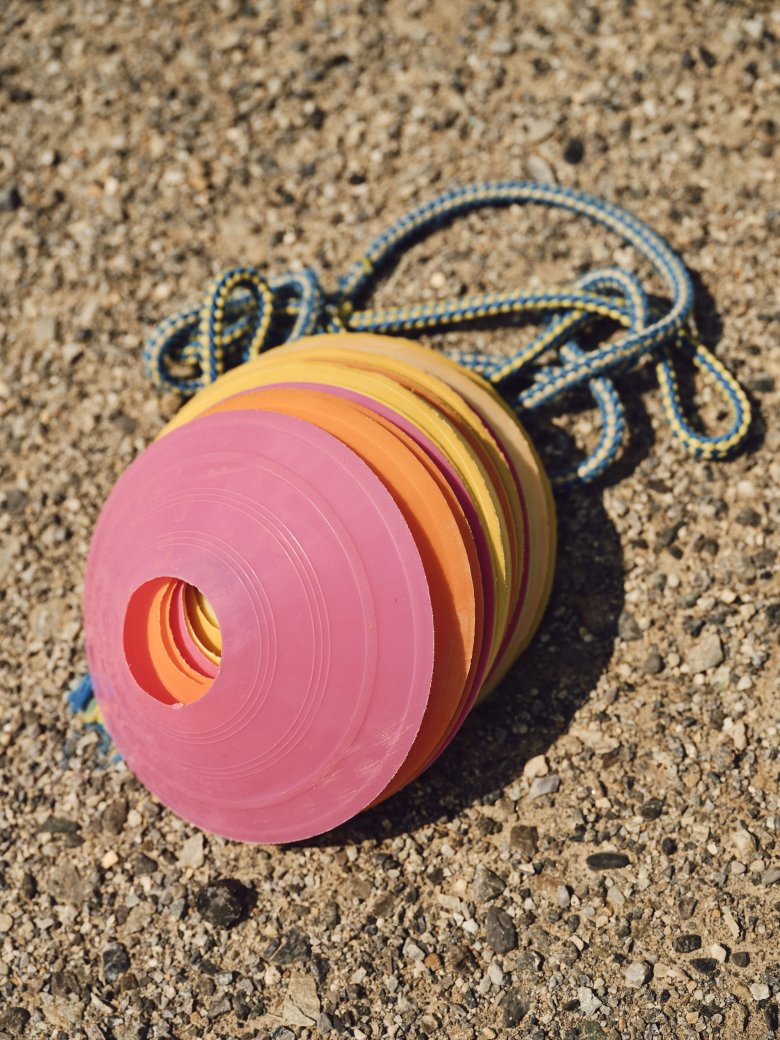
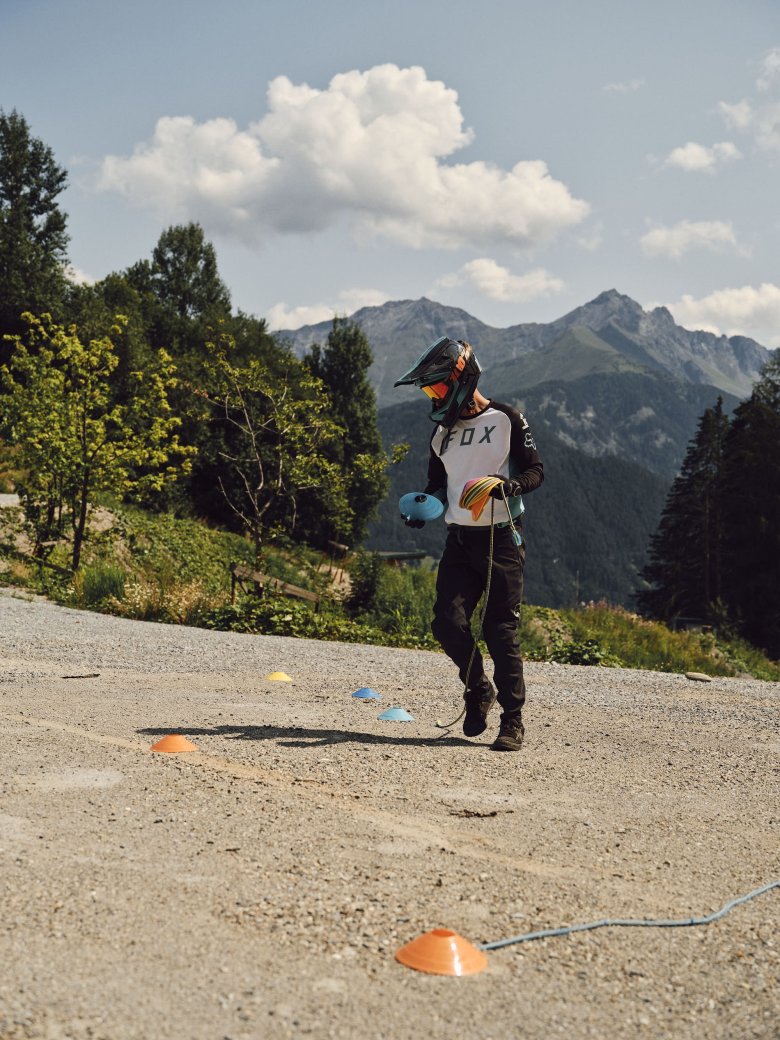
I do my best to get my gorilla on, but I keep making the mistake of sitting down on the saddle – old habits die hard. Christian tells me that downhill mountain bikers spend almost all their time standing up, using their arms and legs like shock absorbers to flex and move with the terrain. "Sitting down and pedalling are things we almost never do," he says, adding that some downhill riders don't even have chains on their bikes as they find them to be unnecessary and annoying.
Downhill biking, it seems, has almost nothing in common with the kind of cycling I have been doing my whole life. For me, bikes have always been first and foremost a means of transport – a healthy way of getting from A to B without having to endure the awful stench and grumpy faces on the underground. The steepest thing I have ever ridden is the Bleichbergstraße road back in Kronberg, the town in Germany where I grew up. From top to bottom it descends the best part of 50 vertical metres, with sections of up to 15% gradient where on a good day my cargo bike and I would reach top speeds of around 50km/h – thrilling stuff, even on a smooth tarmac road. Conditions here are totally different. I gaze up at the mountain and wonder whether this really was a good idea. I suppose there's no going back now.
We progress from the gravel practice area to the "pumptrack", a circular dirt course with lots of up-and-down sections known as rollers. Christian explains that the idea is to "pump" the bike up and down through these rollers and banked corners to generate momentum. The only other riders on the course are primary school kids who are whizzing around like they have been doing it for years. If they can make it look so easy, I tell myself, then surely it can't be that tricky. The dirt rollers look pretty tame from a distance, but as I get closer I se that each is about 1.5 metres high – not exactly daredevil stuff, but enough to get the pulse racing. The trick is to absorb the energy on the upslope using your upper body and then use this momentum to push down on the downslope. My first attempt is less than successful – I pick up too much speed and have to brake in the middle of a banked corner, just about managing to get my foot down before I fall flat on my face. I head back to the start, determined to get it right next time. Things do indeed improve as I develop more of a feel for the rythmn and flow of the track. I do two more runs, getting smoother each time, before my muscles tell me to stop. Pumptrack might sound easy, but it's actually hard work. There's still plenty of riding to be done today.
As I stand at the bottom of the Waldbahn cable car at 1,420 metres I have a flashback to my first ski course in the mountains – in particular the fear of falling over on the lift and looking like an idiot. All I have to do is lift my bike up onto its back wheel and manoevre it through the relatively narrow door into the moving cable car. I don't fall over, but it does take me three attempts. The good thing about the full-face helmet is that you can't see the stress and strain on my red face. Still, getting the bike into the cable car is definitely a lot easier than the other alternative: riding up to the top. We hop off 400 vertical metres further up at the top of the Bikepark Serfaus-Fiss-Ladis. The ascent was a good chance not only to catch my breath but also to check out the network of trails from above. All in all there are nine trails carved into the wooded slopes of the Unterer Sattelkopf mountain. As with ski pistes, each trail has a difficulty rating (blue, red or black) and, of course, a name: "Milky Way", "Morning Glory", "Supernatural", etc.
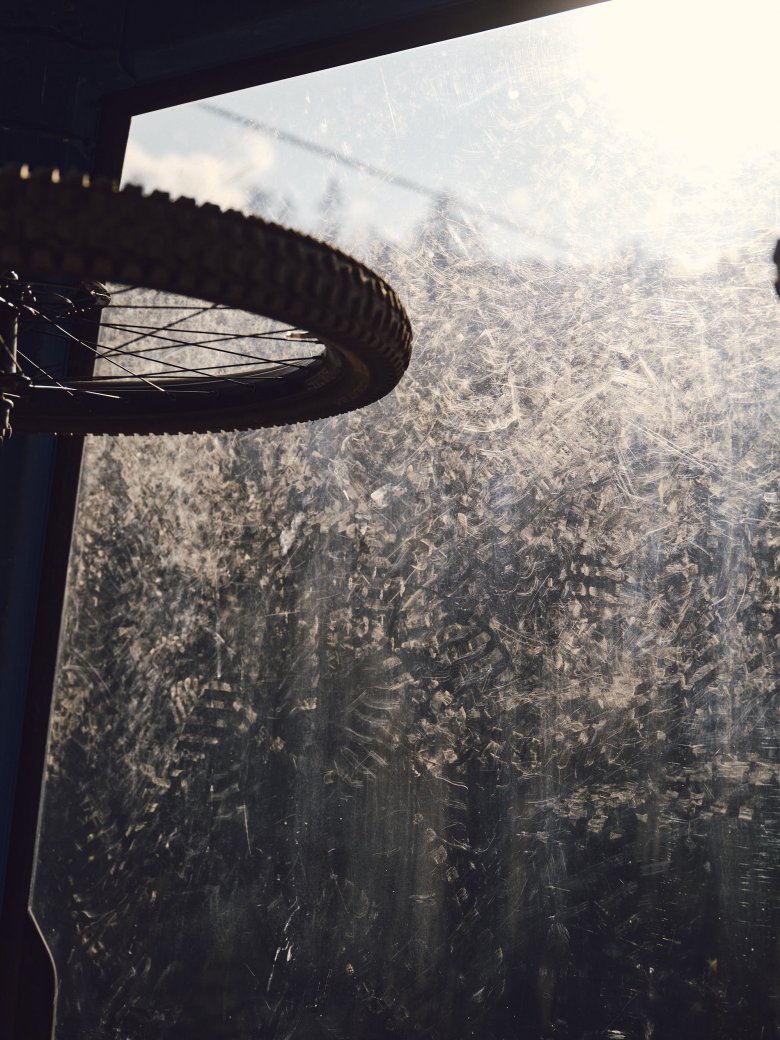
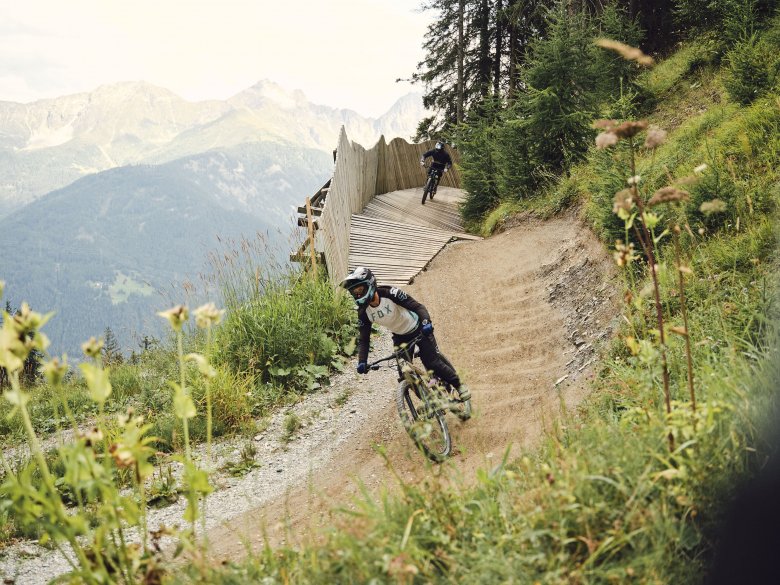
The first 100 metres of descending are pretty easy. I follow Christian as he winds his way through open meadows, dictating the pace and showing me the way. I notice how much grip my tyres have, even on this loose terrain. The summer air hangs heavy with the scent of pine trees and dried grass. Every now and then I even dare to take my eyes off the trail and enjoy the view of the 3,000-metre-high mountains on the other side of the valley. I am feeling good – until we reach the treeline. All of a sudden the terrain changes. We wind our way down a steep slope along a series of narrow switchback corners. Again and again I find myself panicking as I speed towards a corner or nearly lose control on a "bombed out" section – the term used by downhillers to refer to bits of trails where so many riders have braked hard that the ground is bumpy and hard to ride. My instinctive reaction is to slam on the brakes – a strategy which Christian is none too pleased with.
"Most accidents happen because of braking mistakes," he explains. Disc brakes such as those on my bike require only minimal pressure – often a single finger is enough – to slow down, he tells me. It is also important to brake either before or after the corner, he says, but not in the corner. "If you are riding a section with lots of roots, for example, let the bike do the work for you. Rely on your suspension. In rough sections, the faster you are the more stable the bike remains. Speed is your friend."
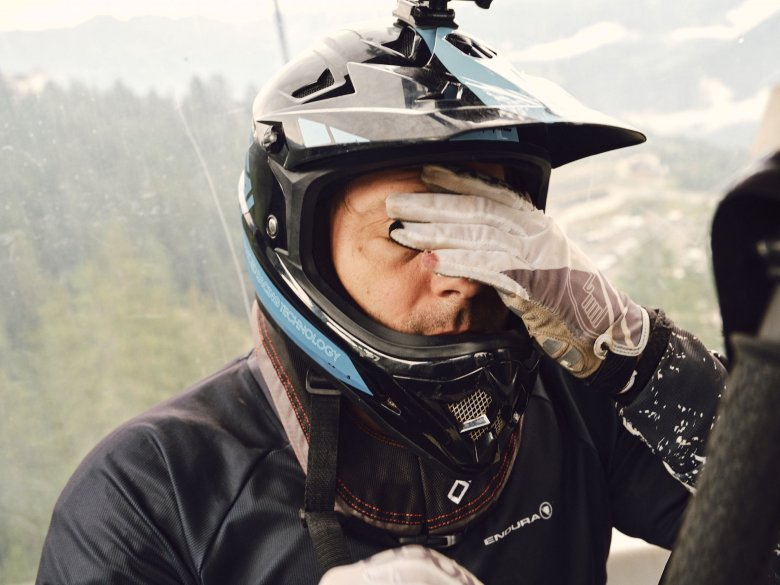
Before I know it we are back down at the bottom of the cable car. Thank God. To the uninitiated, downhill biking may look like just pointing your bike down the mountain and holding on for dear life. Now I know how phyiscal it is – I feel like I have just done 200 press-ups. I glance over towards my guide and guru, Christian. He is not exactly a bodybuilder. Instead, he is all muscle and sinew. He tells me he has been downhilling for 20 years, collecting several podium finishes in European Cup races along the way. Impressive. Despite racing at a high level, he is so relaxed and friendly that I have to admit I underestimated him a little when we first met. I later find out he also regularly does photoshoots for catalogues and magazines, hitting jumps of five metres and more as he flies over the heads of startled hikers.

Christian Rakosy has been working for several years as a bike guide at the Bikepark Serfaus-Fiss-Ladis. In his spare time he takes part in European Cup downhill races and has also performed as a bike stuntman in several films. The bike school is located at the bottom of the Waldbahn cable car in Fiss and offers courses for riders of all ages and abilities. A technique course, which lasts around 3 hours, costs €60.
"There are two ways of controlling your fear," Christian says as we ride the cable car back to the top of the mountain. "You can use the terrain or you can use your speed." That is why the mantra at the Bikepark Serfaus-Fiss-Ladis is Pre-Ride (location check), Re-Ride (practice) and Free-Ride (do your thing). "But what about courage, bravery and overcoming your fears?" "Step by step," says Christian. "You don't have to start with the biggest jump on the mountain. Start small and work your way up. Each time you land a jump your confidence grows."
Later that day we ride the trail "Strada del Sole" (rating: red, intermediate). I see a mountain hut where riders are invited to jump off the 2.5-metre-high roof. It looks pretty intimidating, but I make a mental note to myself – by the end of our two-day course I want to jump that roof. For a long time I thought that downhill mountain biking was the preserve of professional stuntmen and adrenaline-junkies. By the end of day one I am pleasantly surprised to see how accessible this sport is. Bikes like mine, worth €3,000, can be hired by the day, and friendly guides like Christian do a great job of introducing even novices like me to the sport in a fun, safe and relaxing way.
Day two begins with rain. The mountains are swathed in heavy clouds. We stay in the Training Area near the bottom of the cable car and do precisely what Christian was talking about the day before, jumping kickers of ever-increasing size to build up my confidence. "Commitment is key," he says. I ride towards the smallest kicker in the park, just one metre high, and pop off the top before landing safely on the dirt below. Evel Knievel it may not be, but I am more than a little proud of myself. I ride the conveyor-belt lift back up to the top of the area and do it again, this time with more speed. It is then time to step things up. After just an hour of practice in the Training Area I have worked my way up to the second-largest kicker, which stands two metres high.
I am feeling good and riding high, so I decide to take on the biggest jump. This one is not much larger than the kicker I have already conquered, but instead of being 100% flat it has a slight camber. As soon as my wheels leave the lip, I realise I don't have enough speed to make it to the other side. This is going to hurt. I land hard on the knuckle of the landing zone, fly straight over the handlebard and slam hands, elbows and chest into the dirt. Ouch. I hope nobody saw me. I jump up, dust myself off and head for the lift. It is only a few minutes later that I notice how much my hands and fingers are throbbing – and that my bike's saddle has been ripped off by the force of the impact. Back to the shop, I guess. "Wow, how did you manage to do that?" asks the guy in the workshop as he installs another saddle back on my trusty steed. "I guess I didn't commit enough," is my only answer.
I ride back to the Training Area and hop on the conveyor-belt lift. After the successful start to the day, I don't want my little mishap to ruin things. My white gloves are red with blood. I really want to give it another go. Back on the horse and all that. At the top of the Training Area I meet Raphael. With his dreadlocks, rucksack and a large wooden rake over his shoulder, he looks like a shepherd who has lost his way. I soon find out that he is a member of the Shaper Team responsible for keeping the jumps, landings, etc. in top condition. I ask him what his favourite part of the bikepark is. Instead of telling me about the steepest trails and biggest jumps, he talks about harmony and flow. "It just has to feel right," he says. I am beginning to understand what he means.
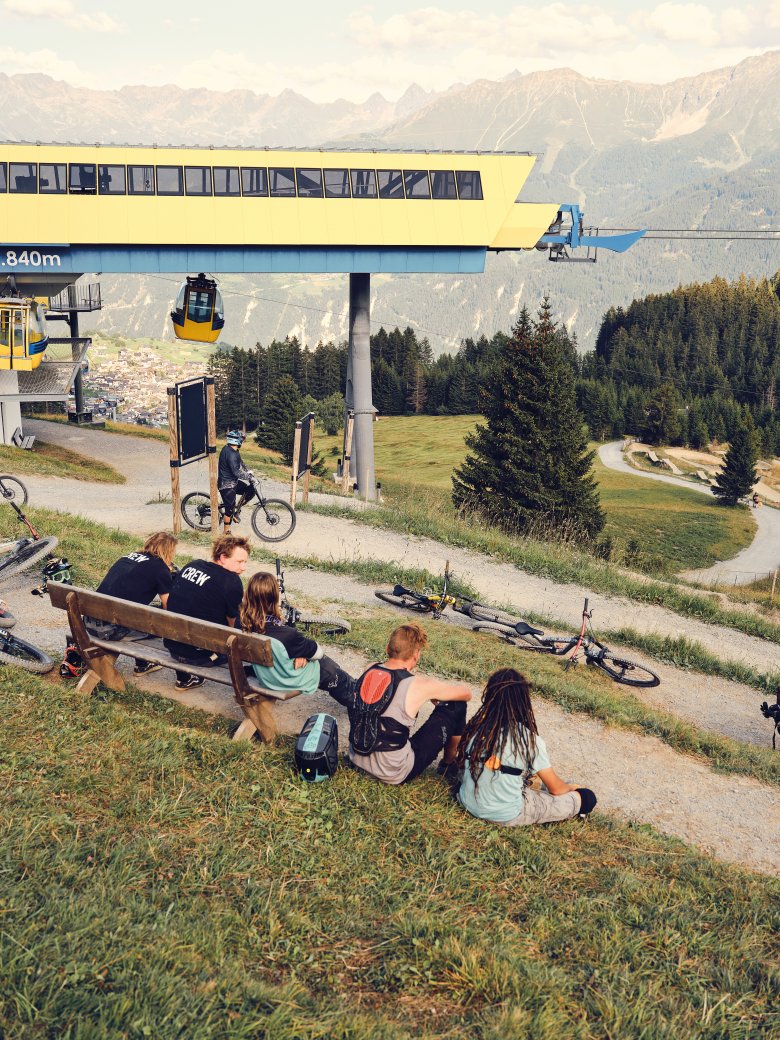

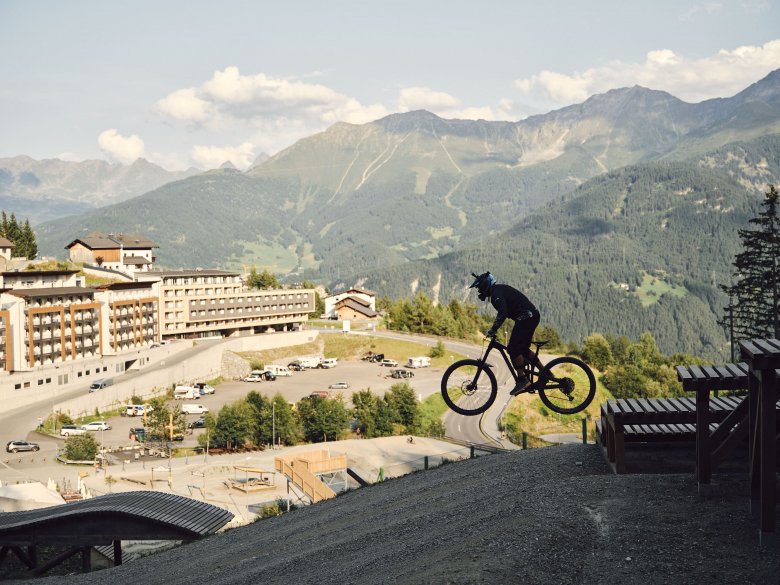
At one o'clock in the afternoon the skies clear and the sun comes out. We are on our way to the "Milky Way" trail. The crash in the Training Area has dented my confidence. I am determined to get back to where I was in the morning. Step by step I work my way up through the kickers, but I fall again. I can't help but think of that mountain hut where I swore to myself I would jump off the roof by the end of day two. What was Christian saying about the two secrets to dealing with fear? "Speed and terrain."
On our last descent of the day we stop at the hut. I look on as several riders hurl themselves off and roof and land safely on the other side. As for me, I have decided to give it a miss this time. I'll be back. And the hut will still be here waiting for me. I zip my back into the valley, sweeping through corners at just the right speed and using the camber to catapult me out on the other side. For a moment I know exactly what Raphael meant when he talked about feeling and flow. For the first time I am truly at one with the trail – and that is what downhill mountain biking is all about. It's not about fear, it's about feeling. It's not about where you're going, it's about enjoying the moment.









